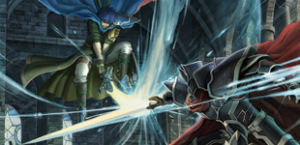

Act 1 plays out from Alm’s perspective before control swaps to Celica’s for Act 2. How you approach combat will ultimately vary depending on which army you’re controlling.Īcts 1 and 2 serve as soft tutorials, slowly introducing you to the world map, dungeons, towns, and the concept of jumping between armies. Celica’s army also has access to better and more healing spells earlier than Alm does, whereas Alm’s army generally runs into stronger equipment at a more consistent pace. Celica doesn’t have anyone in her army who can learn Warp or Rescue, but Alm’s army only has one flier (two if you make Faye a Pegasus Knight, but then you lose access to Warp, Renew, and Anew). Celica’s team starts out mage heavy with more melee units recruited later, while Alm’s team starts out melee heavy as mages join him in the back-half. Where Alm has an abundance of horseback units, Celica’s army has three fliers. Although Celica’s army might seem more rag-tag than Alm’s, her group simply has different priorities. Even then, she only does so at your discretion and not as part of the narrative. Conversely, Celica is traveling in secret with a small group so it makes sense for her to employ sellswords and recruit newcomers to her cause during her travels.

Alm realistically cannot be going out of his way to save or recruit random damsels, something the game actually comments on in one of the few instances you’re allowed to do so. It makes sense that most of his allies are trained warriors and that the majority of his army is recruited through the story. Their arcs directly influence one another and their differing circumstances lead to unique gameplay set pieces depending on who you’re playing as.Īlm is fighting a militarized nation alongside a group of resistance fighters. Alm believes Zofia needs to militarize against Rigel, while Celica wants to prevent as much violence as humanly possible. Beyond that, SoV frames them as star-crossed lovers with two very different answers to the war they’ve found themselves in. The two briefly lived together in Ram when Alm’s adoptive grandfather, Mycen, took Celica in. Naturally, the story has two protagonists: Alm, a farm boy from Ram Village, & Celica, a Princess-in-hiding raised on the holy Novis Island. Echoes’ framing ends up being one of the best parts of the experience. Gameplay is also split between two distinct armies on separate parts of the continent, offering different glimpses at Valentia both mechanically and narratively. Battles don’t just transition into each other either, as there’s now an actual overworld to traverse (think Final Fantasy Tactics). Each act is made up of a several smaller battles instead of dedicating entire chapters to fleshed out battlefields. Rather than following a chapter based structure like the rest of the series, Shadows of Valentia is act based. It speaks to both Echoes’ quality and just how much Fire Emblem has changed over the years. You can jump from Three Houses to Shadows of Valentia without so much as missing a beat, whereas not even The Sacred Stones - the closest thing Gaiden had to a spiritual successor for years - can prepare you for how off-kilter FE2 really is.
#Blessed sword fire emblem echoes free
While it would take years for the likes of free grinding or reclassing to become franchise staples, all these mechanics keep a black sheep’s remake surprisingly palatable for modern fans. Limitless grinding, no weapon durability, classical monsters, and reclass opportunities (which actually began life as a glitch that SoV turned into a feature) all got their start in Gaiden. The end result is a remake that’s surprisingly faithful to its Famicom source material while perfectly at home with modern Fire Emblem.Īs unique as Gaiden is, the game also introduced several concepts that titles like Awakening & Fates would later embrace. Gaiden’s RPG elements are even more pronounced in the remake, with villages undergoing an overhaul and dungeons offering an interesting layer of light exploration to the gameplay loop. Maps are faithfully flat recreations of their Famicom counterparts. The weapon triangle is nowhere to be seen despite previous remakes incorporating the mechanic. If anything, Echoes is as faithful a modern remake could have realistically been without just being a 1:1 conversion. What’s especially impressive is that Shadows of Valentiadoes so without straying from Gaiden’s many eccentricities.


 0 kommentar(er)
0 kommentar(er)
